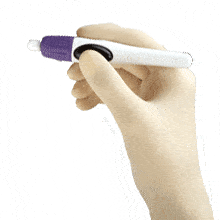Most adults know that cuts and scrapes are all a part of life. While many types of wounds can damage the skin including abrasions and lacerations, ordinarily small cuts and scrapes do not require a visit to the hospital and can be treated properly at home. Unfortunately, minor cuts and scratches can be extremely painful and if not cleaned properly, could cause an infection. Follow these five simple steps when cleaning a cut or scrape:
1.) Wash your hands with soap and water.
Make sure you wipe down the area with a common wound cleanser before treating the wound in order to wash away any existing bacteria.
2.) Try to stop the bleeding.
Apply direct pressure to the wound with your hand to stop the bleeding. If the bleeding is heavy and does not stop after applying direct pressure for 10 minutes, it's important to go to the nearest emergency room. The cut could possibly be deeper than expected and may require stiches or dermabond.
3.) Use an over-the-counter antibiotic cream or ointment.
Spray an ointment directly on the wound - this will help get rid of any existing bacteria and prevent bacteria from infecting the wound.
4.) Cover the area with a gauze pad.
This will aid in preventing any dirt or debris from entering the cut.
5.) Take an over-the-counter pain reliever.
To help relieve the pain, take a common pain reliever. However, it's important to use caution and follow the directions carefully, particularly when giving medicine to a child or teenager.
After following these steps, be sure to keep the cut clean and dry and check daily for any signs of infection. Remember that sometimes a specific cut or scrape will require more than a minor treatment at home. If the area appears red or swells and produces pus or a thick fluid, you should seek a medical professional to prevent any further damage.
For more wound care products, such as Aquacel dressing check out our collection at saveritemedical.com.
Sources
Bacteria that Cause Infections in Wound Management
Wound Microbiology and Associated Approaches to Wound Management


